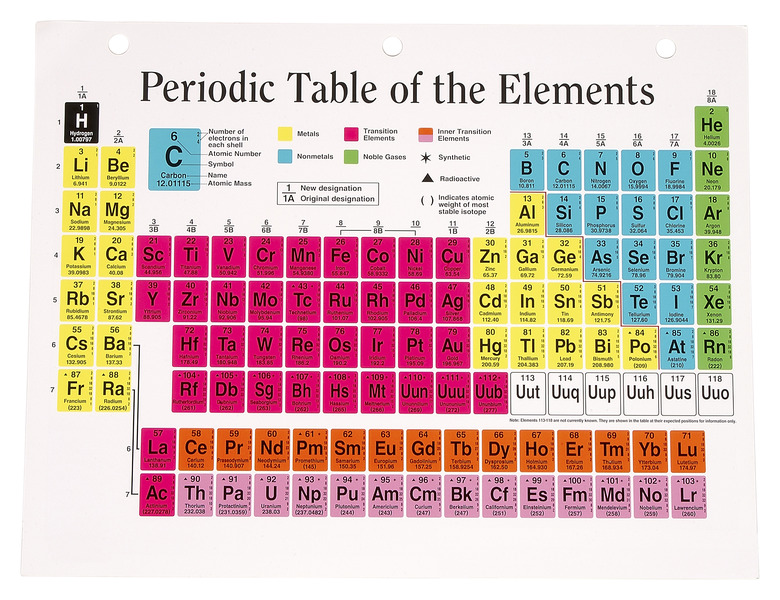How To Balance Magnesium Oxide
According to Nivaldo Tro's "Chemistry," when a chemical reaction occurs, it is typically described by something called a chemical equation. The reactants are on the left side, and the products on the right side, with an arrow in the middle to signify the change. The challenge in reading these equations comes when the product side has more elements than the reactant side. In this case, you will need to balance the equation. Magnesium oxide, popular for preserving plants and books, is formed from a combination of magnesium and oxygen. The question is, how much of each?
Magnesium Plus Oxygen Gives Magnesium Oxide
Step 1
Taking the periodic table, look up the symbols for the given elements and write them down. Note that a single magnesium and oxygen gas are the reactants, while magnesium oxide is the product. Since oxygen is a gas, it is a diatomic molecule, meaning it comes in a pair.
Mg + O2 —-> MgO
Step 2
Recognize the changes that need to be made. On the left side, there are two oxygen molecules, while on the right there is only one.
Step 3
Since we cannot simply subtract a molecule of oxygen from the left side of the equation, nor can we change the equation of the product magnesium oxide,we must note the position of magnesium on the periodic table, and recall your previous knowledge of ionic bonding.
When two atoms of this element are reacted with one oxygen gas molecule, one of its electrons will be given up to oxygen's valence shell, forcing the final product to have only one atom of oxygen, which we see that it does.
Step 4
Taking your pencil to paper, the thing to do is add a "2" in front of the magnesium on the left side, making the final answer: 2 Mg + O2 —> 2 MgO
Things Needed
- Periodic table
- Information on ionic bonding
- Pencil
- Paper
TL;DR (Too Long; Didn't Read)
It is easier if the ionic bonding relationship is given to you, like it is here. In order to recognize it when it is not given, know that an ionic bond simply takes an element from the far left side of the periodic table and combines it with an element on the far right side.
Warning
This is the process for the simplest of chemical equations. Do not assume this is the case for all chemical reactions. Some are reversible, and some have more than one product. Check with your instructor to see if you are required to know how to balance both.
References
- "Chemistry: A Molecular Approach"; Nivaldo Tro; 2007.
Cite This Article
MLA
Depalma, Caroline. "How To Balance Magnesium Oxide" sciencing.com, https://www.sciencing.com/balance-magnesium-oxide-5835368/. 24 April 2017.
APA
Depalma, Caroline. (2017, April 24). How To Balance Magnesium Oxide. sciencing.com. Retrieved from https://www.sciencing.com/balance-magnesium-oxide-5835368/
Chicago
Depalma, Caroline. How To Balance Magnesium Oxide last modified March 24, 2022. https://www.sciencing.com/balance-magnesium-oxide-5835368/
